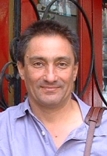Vortragsprogramm |
||||
09:15 - 10:30 |
Morning Keynote |
Dr. Alan Hartman IBM Haifa Research Laboratory Israel |
||
Patterns are a way to analyze solutions to recurring problems, make them reusable and communicate them. Patterns were introduced in the field of architecture in the 1970s by Christopher Alexander, and greatly popularized in the field of software engineering by the “Gang of Four” (Gamma, Helm, Johnson and Vlissides) who published their book in 1994. In the last 5-10 years the language of patterns has also been adopted by some parts of the testing community. In this talk Alan Hartman will discuss the essential questions faced by testers who are interested in test patterns:
|
||||
|
|
||||
| [an error occurred while processing this directive] zurück zum Vortragsprogramm | ||||
|



